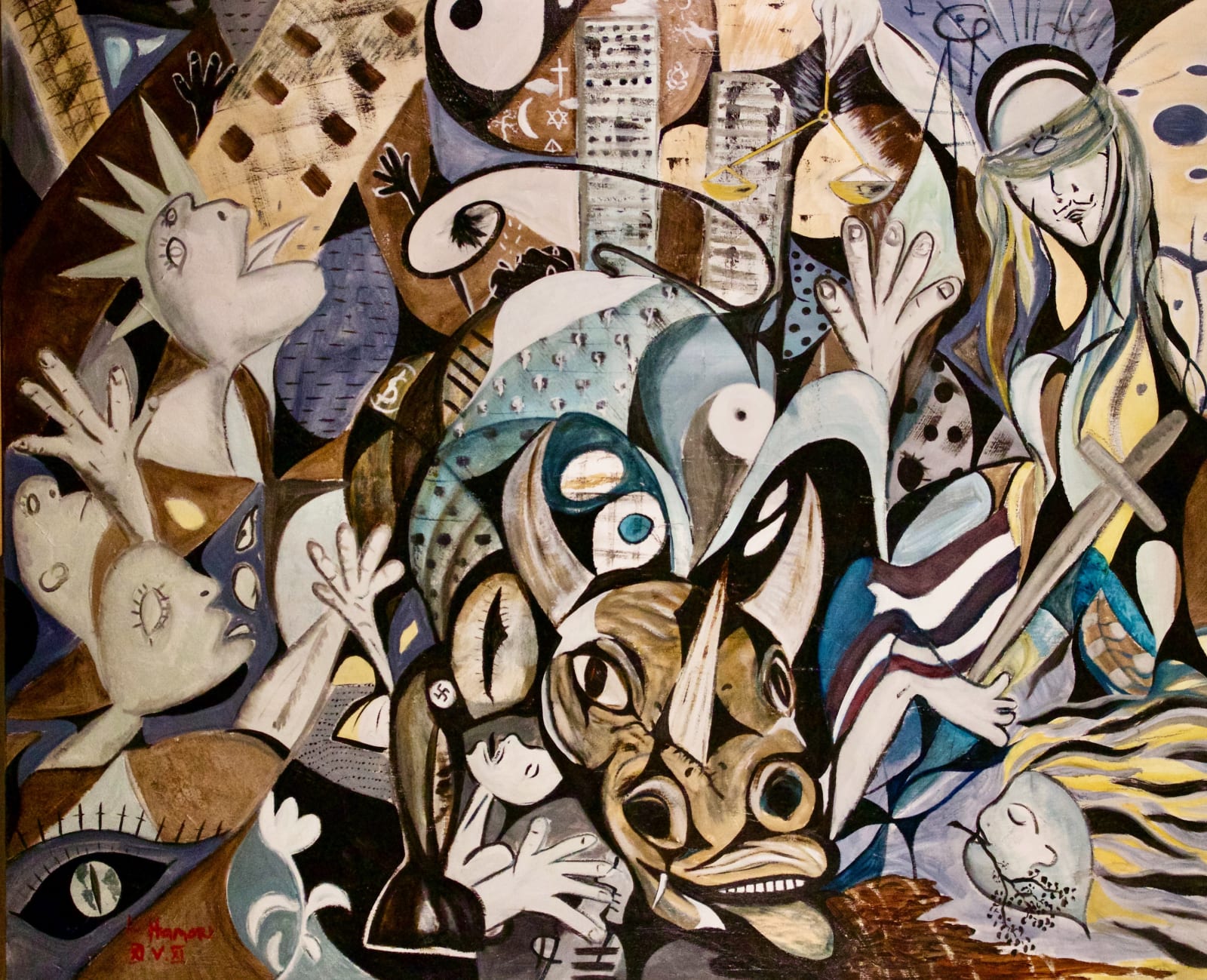Laszlo Hamori
László Hamori’s Wall Street Guernica (2012) is a commanding mixed-media canvas that reimagines Picasso’s anti-war icon through the lens of contemporary capitalism, delivering a trenchant critique of financial excess and its human toll. Hamori, a Hungarian-Canadian artist known for his figurative explorations, harnesses his technical virtuosity—layered charcoal underdrawings, oil glazes, and strategic 18-karat gold leaf—to construct a frenetic tableau of fractured forms and symbolic density. The composition, teeming with disjointed skyscrapers, contorted suits, and cascading stock tickers, evokes a maelstrom of economic chaos. At its heart, a bull—Wall Street’s emblem—rears as a gilded yet bloodied behemoth, its horns both opulent and menacing, symbolizing the rapacious drive of unfettered markets.
Hamori’s dialogue with Picasso is deliberate yet innovative, replacing Guernica’s wartime carnage with the insidious violence of corporate greed. Embedded Orwellian motifs—surveillance eyes woven into currency symbols and digital screens—underscore technology’s complicity in dehumanizing systems, a recurring theme in Hamori’s oeuvre. His meticulous dotwork, a hallmark of his practice, imbues the surface with a tactile tension, oscillating between frenetic energy and fragile decay, mirroring the precariousness of financial empires. The interplay of gold leaf and somber hues further amplifies this duality, juxtaposing wealth’s allure with its moral bankruptcy.
The work’s power lies in its ability to transcend mere homage, forging a distinct narrative that interrogates the erosion of human agency in a commodified world. Wall Street Guernica stands as a masterful synthesis of historical reverence and contemporary critique, cementing Hamori’s position as a visionary chronicler of humanity’s struggle against systemic forces. It is a work that demands scrutiny, its layered symbolism and raw intensity lingering long after the first encounter.
